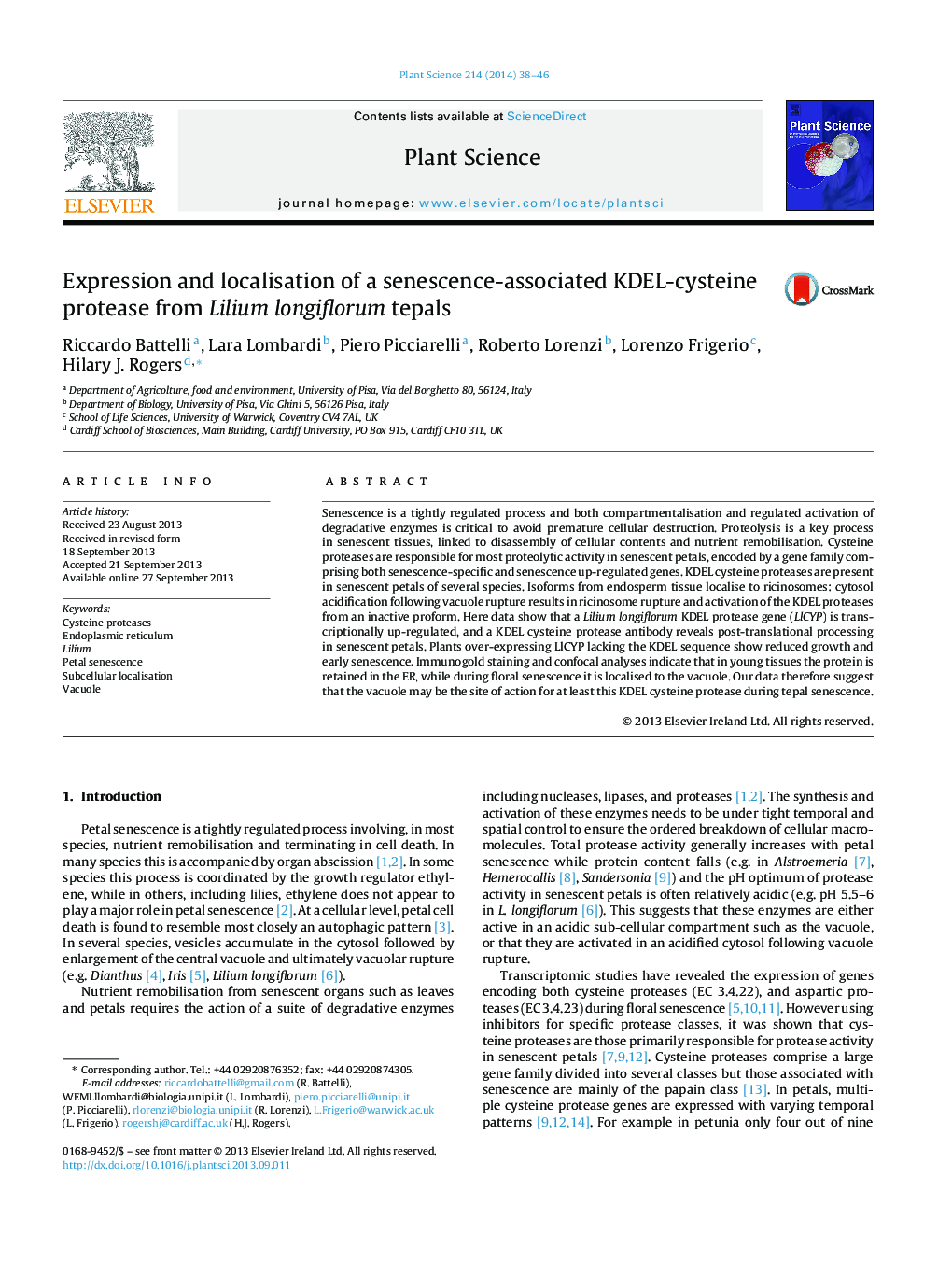| Article ID | Journal | Published Year | Pages | File Type |
|---|---|---|---|---|
| 2017119 | Plant Science | 2014 | 9 Pages |
Abstract
Senescence is a tightly regulated process and both compartmentalisation and regulated activation of degradative enzymes is critical to avoid premature cellular destruction. Proteolysis is a key process in senescent tissues, linked to disassembly of cellular contents and nutrient remobilisation. Cysteine proteases are responsible for most proteolytic activity in senescent petals, encoded by a gene family comprising both senescence-specific and senescence up-regulated genes. KDEL cysteine proteases are present in senescent petals of several species. Isoforms from endosperm tissue localise to ricinosomes: cytosol acidification following vacuole rupture results in ricinosome rupture and activation of the KDEL proteases from an inactive proform. Here data show that a Lilium longiflorum KDEL protease gene (LlCYP) is transcriptionally up-regulated, and a KDEL cysteine protease antibody reveals post-translational processing in senescent petals. Plants over-expressing LlCYP lacking the KDEL sequence show reduced growth and early senescence. Immunogold staining and confocal analyses indicate that in young tissues the protein is retained in the ER, while during floral senescence it is localised to the vacuole. Our data therefore suggest that the vacuole may be the site of action for at least this KDEL cysteine protease during tepal senescence.
Keywords
Related Topics
Life Sciences
Agricultural and Biological Sciences
Plant Science
Authors
Riccardo Battelli, Lara Lombardi, Piero Picciarelli, Roberto Lorenzi, Lorenzo Frigerio, Hilary J. Rogers,
